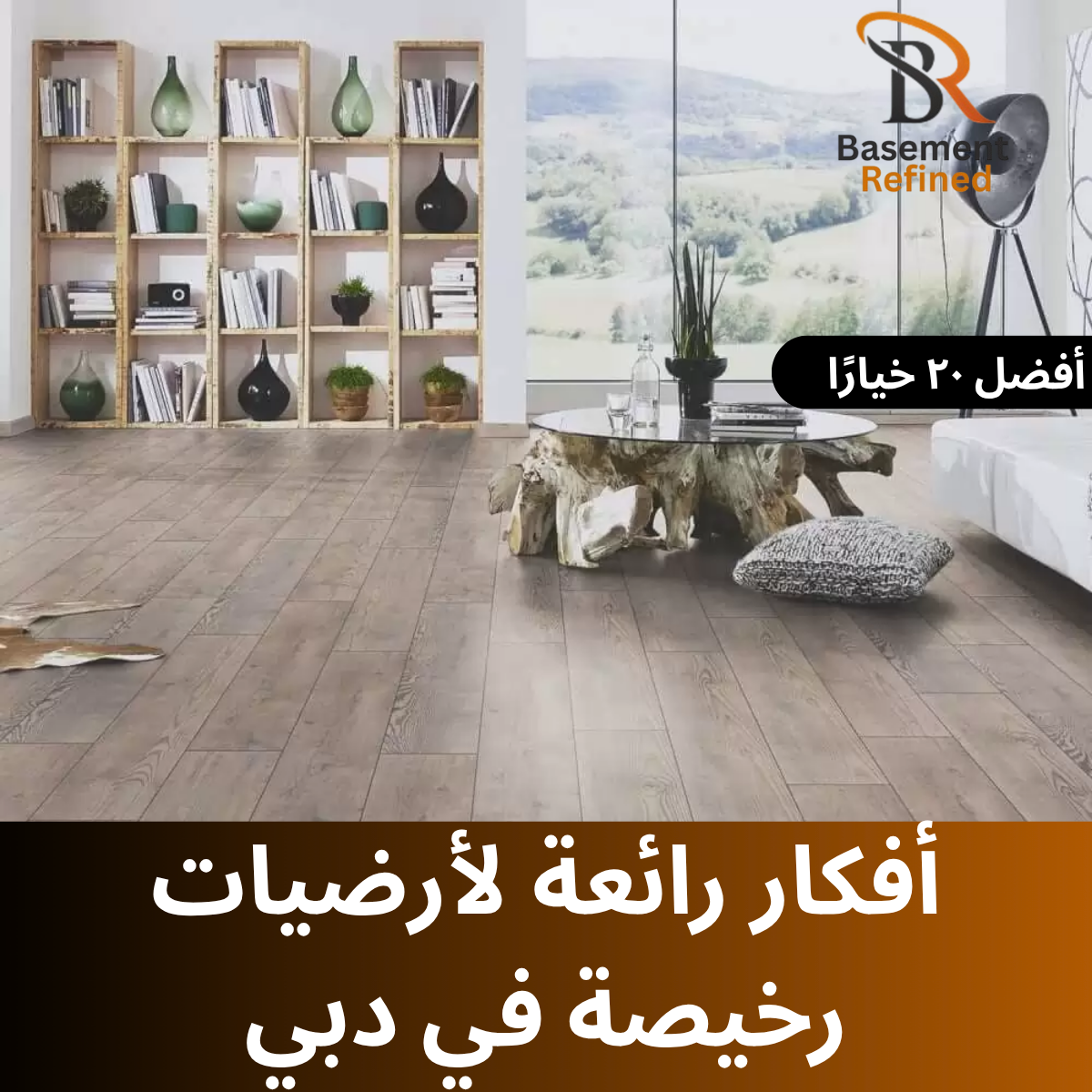Opening Hook
It was a sweltering summer afternoon in Lahore when Ahmed stepped into the cool, dimly lit basement of his newly built home. He smiled, thinking about the countless family gatherings and storage possibilities this space would offer. But within a year, that smile faded—hairline cracks appeared on the walls, dampness crept in, and a musty smell lingered no matter how much he cleaned. The culprit? Poor construction material choices.
Basements in Pakistan are becoming more common, whether for extra living space, home theaters, or simply storage. Yet, many homeowners underestimate how critical the right materials are in ensuring that these underground spaces remain dry, durable, and structurally sound for decades.
Understanding the Basement Challenge in Pakistan
Building a basement in Pakistan isn’t like building one in a dry climate—it’s a battle against groundwater seepage, fluctuating soil conditions, and extreme seasonal changes.

In cities like Karachi, the soil is sandy and groundwater levels are high, increasing the risk of seepage. In contrast, Lahore and Islamabad often deal with clay-heavy soils that expand and contract with moisture, putting pressure on basement walls. This makes material choice not just a technical decision, but a survival tactic for your structure.
Read More: Signs of Toxic Mold in Basement Walls: What Every Homeowner Should Know
1. Reinforced Concrete – The Backbone of Your Basement
If the basement is a ship, reinforced concrete (RCC) is its hull. It’s what keeps water out and your structure intact.
Why it works: RCC combines the compressive strength of concrete with the tensile strength of steel, making it resistant to soil pressure and structural stress. In Pakistan, M20 or higher-grade concrete is recommended for basements.
Real-life example: In a housing society in Islamabad, two neighboring homes were built in the same year. One used proper RCC walls with water-reducing admixtures, the other relied on basic brickwork for most walls. Within two monsoons, the brick basement had damp patches and minor wall collapse, while the RCC basement remained dry.
Pro tip: Always insist on proper curing—at least 7 days for slabs and 14 days for walls—to avoid microcracks that can lead to leaks.
Read More: Prayer Room + Reading Nook Hybrid Ideas Blending Tranquility and Inspiration at Home
2. Bricks vs. Concrete Blocks – Which to Choose?
Many Pakistani contractors still use traditional clay bricks, but for basements, solid concrete blocks or fly ash blocks often outperform bricks.
Clay bricks:
- Pros: Easily available, good insulation.
- Cons: Porous, prone to water absorption, and can weaken over time if exposed to damp conditions.
Concrete blocks:
- Pros: Denser, more water-resistant, and larger size speed up construction.
- Cons: Heavier, may need surface treatment for insulation.
In contrast, a mixed approach works best—using RCC for structural walls and concrete blocks for partition walls.
Read More: Dehumidifier Maintenance Tips: Keep Your Air Fresh & Your Device Running Smoothly
3. Waterproofing Membranes – The Unsung Hero
You can have the strongest walls in Pakistan, but without proper waterproofing, your basement will still lose the fight against water.
Bituminous membranes are widely used due to their affordability and proven track record. For high groundwater areas like Karachi DHA or Lahore Cantonment, polyurethane liquid membranes provide even better coverage and flexibility.
Story insight: A homeowner in Karachi invested just 2% of his basement budget on high-quality waterproofing, while his neighbor skipped it. Three years later, he still enjoys a dry basement, while his neighbor’s wall paint bubbles and peels every rainy season.
Read More: Luxury Basement Designs: What’s Trending in UAE
4. Gravel, Drainage, and the Role of French Drains
Basement material choice isn’t just about walls—it’s also about what surrounds them. A layer of washed gravel around basement walls helps redirect water to drainage pipes.
French drains, made with perforated PVC pipes wrapped in geotextile fabric, prevent water from pressing directly against basement walls. While not a “material” in the traditional sense, they’re an essential construction component that extends your basement’s life.
Read More: Comparing Dubai vs. Abu Dhabi Basement Laws
5. Plaster and Finishes – More Than Just Aesthetic
For interior walls, cement-sand plaster with waterproofing additives works far better than plain plaster.
For instance, some builders in Lahore use a cement-lime mix to save cost, but lime can absorb moisture, causing salt deposits (efflorescence) on walls. A waterproof cement plaster may cost slightly more upfront, but it prevents costly repairs later.
Read More: DIY Drainage System for Budget Homes – How to Keep Your Home Dry Without Breaking the Bank
6. Steel Quality – Avoiding Rust in the Dark
Basement rebar (reinforcing steel) faces a high risk of corrosion due to humidity. Always insist on deformed bars with anti-rust coating.
In Pakistan, using Grade 60 steel from reputable mills like Amreli or Mughal Steel ensures strength and long-term durability. Also, proper concrete cover (minimum 2 inches between steel and exterior) protects against corrosion.
Read More: Basement Office Ideas – 11 Stylish Work From Home Spaces
7. Flooring Materials – Dampness is the Enemy
Choosing the right flooring can make the difference between a cozy basement and a cold, clammy space.

Ceramic tiles with waterproof grout are common, but in humid basements, epoxy flooring is gaining popularity due to its seamless, moisture-resistant finish. For home gyms or entertainment spaces, vinyl plank flooring with a vapor barrier underneath is an excellent choice.
Cultural & Climate Considerations
In Pakistan, basements often double as storage areas for expensive furniture, seasonal clothes, or even wedding dowries. This makes moisture control even more crucial—imagine opening a trunk of clothes only to find them smelling musty.
Furthermore, extreme weather swings—from 40°C summers to near-freezing winters—mean materials must withstand thermal stress. RCC and high-quality waterproofing handle this better than cheaper alternatives.
Read More: DIY Drainage System for Budget Homes – How to Keep Your Home Dry Without Breaking the Bank
Budget vs. Durability – The Balancing Act
Many homeowners in Pakistan are tempted to cut costs on materials, thinking “it’s just the basement.” Unfortunately, repairs for a leaking or structurally compromised basement can cost three to five times more than building it right the first time.
For example, waterproofing costs about Rs. 200–300 per square foot during construction, but retrofitting after leaks can cost over Rs. 1,000 per square foot—and that’s if the damage hasn’t spread to structural components.
Read More: Converting Your Basement into a Pet Spa: A Tail-Wagging Guide
Future-Proofing Your Basement
If you plan to use your basement as a living area in the future—whether as a rental unit, home theater, or guest suite—choose materials that support easy retrofitting:
- Extra electrical conduits for lighting and appliances
- Thermal insulation boards to make the space comfortable year-round
- Moisture-resistant drywall for interior finishes
Read More: How to Use Skylights or Light Tubes in UAE Homes
Closing – Building Strong from the Ground Down
Ahmed, the Lahore homeowner from the beginning of our story, eventually had to spend nearly half his basement’s original cost on repairs and waterproofing—money and stress he could have saved with better material choices.
The truth is, basements in Pakistan face unique challenges—high groundwater, seasonal extremes, and soil pressure—that demand careful selection of every component, from the steel in your walls to the tiles under your feet.
When you choose reinforced concrete, quality waterproofing, corrosion-resistant steel, and proper drainage, you’re not just building a basement—you’re building peace of mind.
So the next time a contractor tries to cut corners, remember: what’s hidden underground is what holds your home together.
🏗️ Basement Project Calculator
Latest Post
-
Basement Ceiling Ideas Hide Ductwork Smartly
Opening Hook Imagine walking into your basement in Boise, Idaho—where the ceiling is so low that you brush your head on the joists—and noticing a sleek, well-designed backdrop above you instead of exposed ductwork and pipes. That difference, thanks to smart basement ceiling ideas, transforms a cramped, unfinished area into a welcoming space for movie…
-
أفكار رائعة لأرضيات رخيصة في دبي | أفضل ٢٠ خيارًا
تخيل زوجين شابين في شقة مريحة في مرسى دبي، يخطوان حافيي القدمين على أرضية أنيقة بلمسة خشبية. غرفة المعيشة تتلألأ بضوء مسائي خافت، والأرضية تحتها لا تزال تبدو جديدة تمامًا رغم سنوات من الاستخدام – وكل هذا بميزانية محدودة. هذه هي قوة اختيار أرضيات جميلة ورخيصة في دبي: الأناقة والتوفير في آن واحد. التركيز على…
-
Beautiful Cheap Flooring Ideas in Dubai | Top 20 Picks
Imagine a young couple in a cosy apartment in Dubai Marina, stepping barefoot onto a sleek, wood-look floor. The living room glows with soft evening light, the flooring beneath still looks brand-new despite years of use—and all this on a budget. That’s the power of choosing beautiful, cheap flooring in Dubai: style and savings in…



